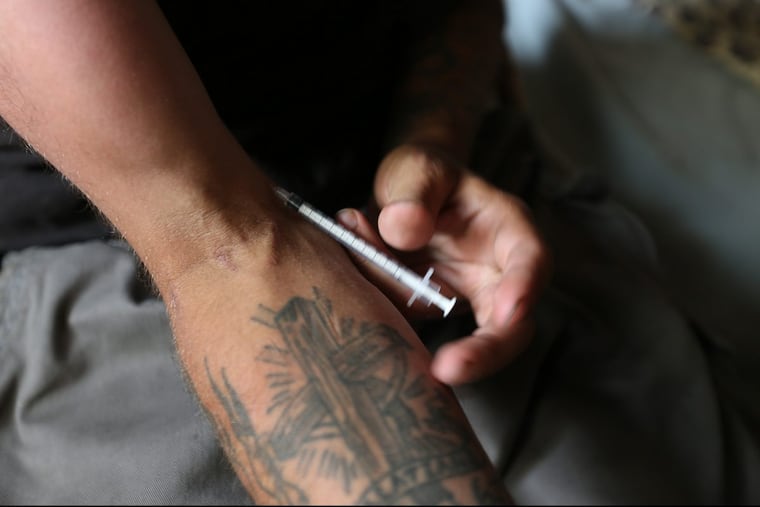What's happened to Philly's safe injection site plans for heroin?
The city says it will explore the controversial proposal - considered by advocates a key in saving lives - but has done little so far.

More than two months after Mayor Kenney's opioid task force made its controversial recommendation to explore the idea of a site where heroin users could inject drugs safely under medical supervision, the concept has yet to move forward.
"We're at the beginning process," Alicia Taylor, a deputy press secretary for the Mayor's Office, said Monday as the city and Conrail started cleaning up the encampment of homeless heroin users along the railroad tracks in Kensington.
Most advocates who work with that community believe that a supervised injection site is the only way to prevent more overdose deaths. Of the 907 fatal overdoses in the city last year, only 17 were near the tracks below Gurney Street where people use heroin together and, not infrequently, save each other using emergency overdose reversal medication.
"I think the only way to effectively reduce the overdose burden is with immediate medical intervention," said Jen Bowles, who studied heroin use and overdose prevention in Kensington for her doctoral dissertation at Drexel University's Dornsife School of Public Health. That intervention generally involves giving naloxone, the highly effective medication that is administered by emergency physicians, paramedics, and, increasingly, other drug users.
A location where heroin users could inject with medical personnel nearby would help them get treatment for blood-borne infections like HIV and hepatitis C. "And symbolically it would be really important," Bowles said, to show that, in fighting the overdose epidemic, "the city is willing to take progressive steps based on scientific evidence."
Bowles was on a subcommittee of the mayor's task force that, she said, was nearly unanimous at one point that the city should "carefully plan and implement" a supervised injection site. The May 19 final report had softer language, calling for the city to "further explore" the possibility of "comprehensive user engagement sites," or CUES.
Medically supervised locations where users can inject heroin operate in Europe, but in North America only one city – Vancouver – operates such a site. Plans are moving forward in Seattle.
They are highly controversial, typically opposed by law enforcement and often by neighbors who believe that the sites will draw drug users and enable addiction. "Actually this would enable fewer overdose deaths and fewer infections," said Bowles.
Taylor, the press secretary, said that Thomas Farley, the city health commissioner, and David Jones, the commissioner of behavioral health, were considering the "next steps" needed to explore supervised injection sites, "which will include visits to places like Canada and Seattle."
No committee has been formed and there is no timetable, she said.
The work was delayed, she said, because this recommendation was one of 18 made by the mayor's task force. Among them are "some that can be implemented much easier that they can hammer away at," she said. "And this is more controversial."